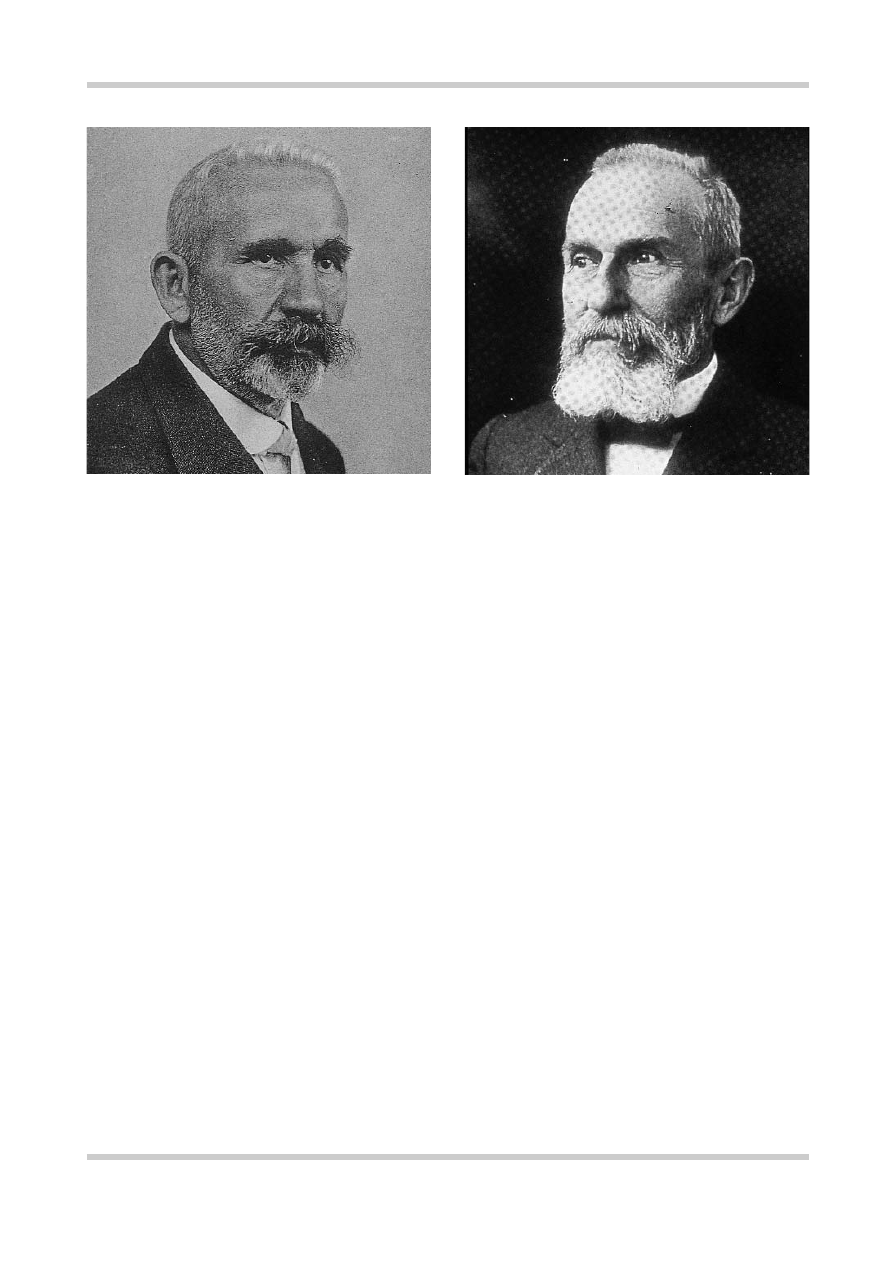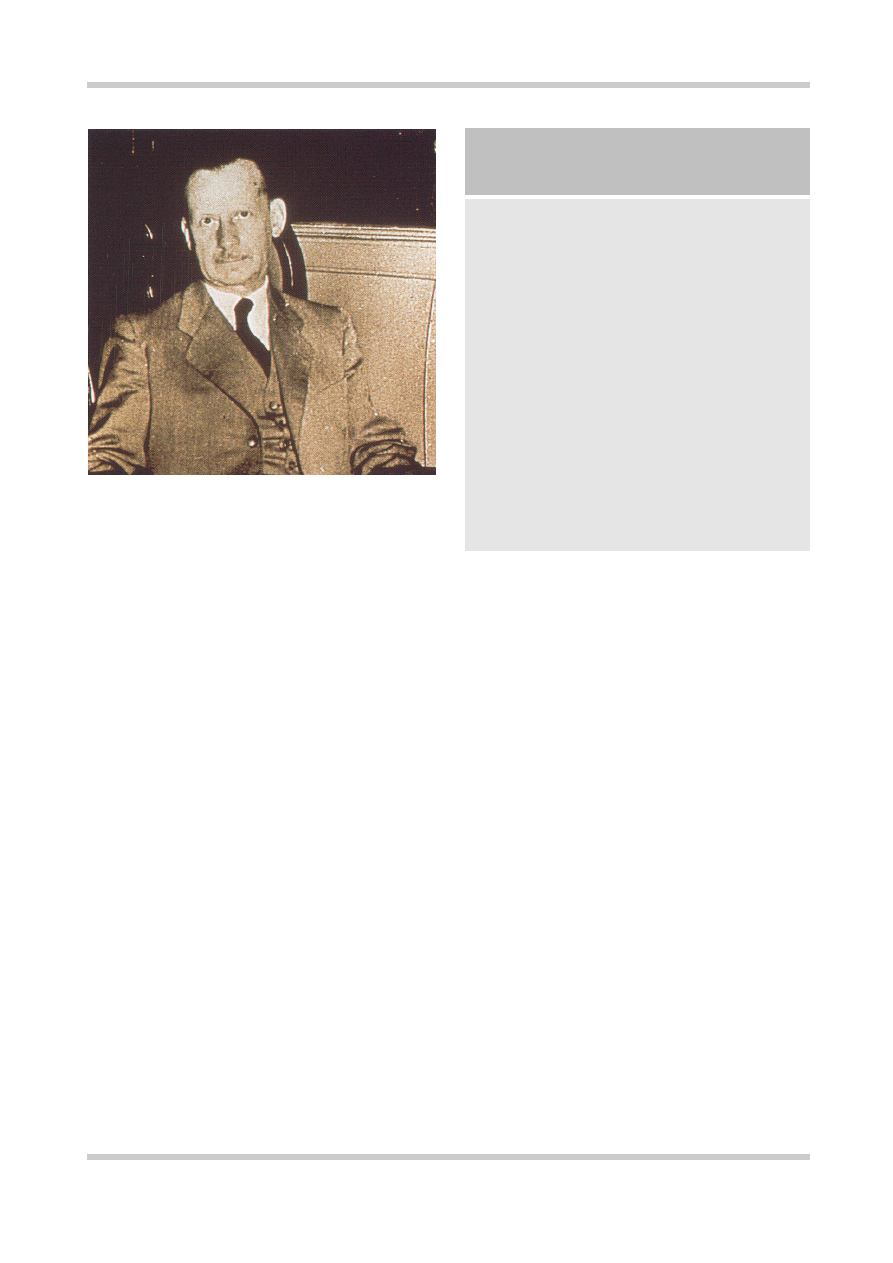ВУЗ: Не указан
Категория: Не указан
Дисциплина: Не указана
Добавлен: 02.10.2020
Просмотров: 1286
Скачиваний: 6

©2002 CRC Press LLC
the two major poles of severe mental illness. He
described one group of patients in whom the
clinical picture was dominated by disordered
mood and who followed a cyclical pattern of
relapse and relative remission; he termed this
‘manic depressive insanity’. Others had a
deteriorating illness characterized by florid onset,
often in adolescence, with a prolonged course
marked by profound social and functional
disability. He called the latter ‘dementia praecox’,
and saw it as ‘a single morbid process’, endogenous
rather than acquired, starting in youth and with
dementia as a common outcome. This concept has
since been enormously influential in guiding our
perception of the disorder, even though Kraepelin
himself came to recognize many of its limitations:
for example, the disease was not always confined
to younger people, the progression to dementia
was not inevitable and in some individuals a
recovery would be seen
4
.
The Swiss psychiatrist Eugen Bleuler (
Figure
1.5
) coined the term ‘schizophrenia’ in 1911 and
this rapidly displaced dementia praecox
5
. Unlike
Kraepelin, who was strongly influenced by the
successes of clinical pathology in the search for
causative agents in diseases such as syphilis and
tuberculosis, Bleuler thought of schizophrenia in
psychological rather than neuropathological
terms. For Bleuler, the florid but highly variable
symptoms of psychosis, such as delusions and
hallucinations, were secondary, ‘accessory’
phenomena. At the core of the illness, he believed,
was a more generalized psychological deficit,
characterised by a ‘loosening of associations’ in the
form of language, by deficits in volition and
attention, and by incongruity of affect,
ambivalence and autism.
Although intellectually compelling as a model
of schizophrenia, Bleuler’s core symptoms were
difficult to define reliably. In particular, the limits
Figure 1.4
Emil Kraepelin (1856–1926). The fifth edition of
Kraepelin’s
Textbook of Psychiatry
2
, published in 1896,
articulated a distinction between acquired and
constitutional pathology in mental illness. The sixth
edition, published in 1899, distinguished between
dementia praecox and manic depressive insanity
Figure 1.5
Eugen Bleuler (1857–1939). In 1911, Eugen
Bleuler published his monograph entitled
Dementia
Praecox, or the Group of Schizophrenias
, and argued that
dementia praecox was not a single disease, was not
inevitably associated with intellectual decline, and had as
its fundamental basis disorders of affectivity, ambivalence,
autism, attention and will. Other symptoms such as
delusions, hallucinations, abnormal behavior and
catatonia were conceptualized as secondary ‘accessory
symptoms’

©2002 CRC Press LLC
of ‘simple schizophrenia’ (schizophrenia uncom-
plicated by ‘accessory’ symptoms) and ‘latent
schizophrenia’ (people with odd personalities said
to share some of the characteristics of the full-
blown disorder) were difficult to define. This
confusion was compounded by the clinical
heterogeneity of schizophrenia, the lack of clear
prognostic features and the failure to discover any
definitive pathological abnormalities, and led to an
expansion of the concept of schizophrenia to the
extent that it became a vague synonym for severe
mental illness with different meanings in different
countries. This was especially the case in the USA,
where Bleuler’s concepts held great sway, and in
the former Soviet Union, where different models
(incorporating, for example, anorexia nervosa
sufferers and political dissenters) had developed.
In Western Europe, where the Kraeplinian
formulation remained dominant, diagnosis was
more consistent, partly because the positive
psychotic symptoms central to the Kraeplinian
definition are more readily and reliably deter-
mined. In 1959
6
, Kurt Schneider (
Figure 1.6
) set
out a list of such symptoms, which would be most
likely, in the absence of organic brain disease, to
lead to the diagnosis of schizophrenia. These
‘symptoms of the first rank’ were selected because
they were relatively easily elicited and reliably
identified, rather than because of any central
theoretical importance; nevertheless, they were
highly influential in determining diagnostic
practice.
The International Pilot Study of Schizo-
phrenia
7
(IPSS;
Figure 1.7
) which investigated the
illness in several centers around the world,
suggested a high degree of consistency in the
clinical picture of schizophrenia when diagnosed
using strict diagnostic rules. This appeared to hold
true in rural and in urban areas, and both in
Western European countries and in developing
countries. The use of operationalized diagnostic
rules in this, and in the earlier US/UK Diagnostic
Project, greatly facilitated research into the
epidemiology of the disorder. Since then, as a
result of the development and use of operational-
ized definitions in the Diagnostic and Statistical
Manual
8
of Mental Disorders (DSM–IV) in the
USA, and the International Classification of
Diseases
9
(ICD–10) worldwide, definitions of
schizophrenia have been considerably narrowed.
Figure 1.6
Kurt Schneider. In 1959 he listed the 'first rank
features' of schizophrenia. One of these symptoms, in the
absence of organic disease, persistent affective disorder, or
drug intoxication, was sufficient for a diagnosis of
schizophrenia
• Audible thoughts
• Voices heard arguing
• Voices heard commenting on one’s actions
• The experience of influences playing on the
body
• Thought withdrawal and other interferences
with thought
• Diffusion of thought
• Delusional perception
• Feelings, impulses and volitional acts
experienced as the work or influence of
others
SCHNEIDER’S SYMPTOMS
OF THE FIRST RANK
©2002 CRC Press LLC
Both ICD–10 and DSM–IV identify a number
of subtypes of schizophrenia. In clinical practice,
a distinction is also often made between acute
and chronic schizophrenia. A third way of
thinking about the varied clinical picture seen
in schizophrenia is in terms of syndromes
(
Figure 1.9
). Unlike subtypes, syndromes do not
Although diagnosis still depends on the presence
of combinations of symptoms and the course of
illness, and diagnostic practice may vary to some
extent from country to country, there is a core
group of patients who fulfill all definitions and
would be diagnosed as suffering from schizo-
phrenia anywhere in the world (
Figure 1.8
).
Figure 1.7
Geographical variat-
ions in the incidence of schizo-
phrenia, (a) broadly defined and
(b) narrowly defined. These data
from the International Pilot Study
of Schizophrenia
7
were taken as
evidence that, particularly when
narrow operational criteria are
used, the incidence of schizo-
phrenia is remarkably constant
between countries. Although this
was very influential when it was
published, subsequent studies
have demonstrated that the
incidence does indeed vary, with
higher rates found in those born
or brought up in cities and in
certain immigrant groups
Aarhus
0
10 20
Incidence (per 100 000)
30
40 50
Chandigarh
rural
Chandigarh
urban
Dublin
Honolulu
Moscow
Nagasaki
Nottingham
Aarhus
0
10 20
Incidence (per 100 000)
30
40 50
Chandigarh
rural
Chandigarh
urban
Dublin
Honolulu
Moscow
Nagasaki
Nottingham
(a) Broad definition
(b) Restrictive definition
GEOGRAPHICAL VARIATIONS IN INCIDENCE
Figure 1.9
Symptoms of schizophrenia appear to cluster into three syndromes: ‘positive’, or reality
distortion, characterized by delusions and hallucinations; ‘negative’, consisting of the ‘deficit’
symptoms including ‘negative thought disorder’, such as poverty of speech and poverty of content
of speech; and ‘disorganization’, in which ‘positive’ formal thought disorder, for example knight’s
move thinking or loosening of associations are seen
Disorganization
Reality
distortion
Negative
Positive
thought
disorder
Social withdrawal
Apathy
Self-neglect
Negative thought
disorder
Delusions
Hallucinations
Passivity
phenomena
SYNDROMES OF SCHIZOPHRENIA
Figure 1.8
Despite the advent of a variety
of operational definitions, categorical
definitions of schizophrenia vary in their
cut-off points on a theoretical continuum.
However, there is substantial overlap
between diagnostic systems and a signifi-
cant proportion of patients fulfil criteria in
all systems
Excess
men
Excess
women
Good
outcome
Poor
outcome
Affective
psychosis
Non-affective
psychosis
schizoaffective and non-affective psychosis
Non-affective psychosis
ICD schizophrenia
DSM–III schizophrenia
DSM–III–R schizophrenia
DSM–IV schizophrenia
THE SPECTRUM OF PSYCHOSIS
©2002 CRC Press LLC
©2002 CRC Press LLC
examination. The family and personal history
may offer important etiological clues. There may
be a family history of schizophrenia, compli-
cations in pregnancy or birth, or a personal
history of childhood problems. Recent studies,
including the follow-up of the British 1946 birth
cohort
10
, have suggested that children who later
develop schizophrenia are more likely to have a
history of developmental delay, as well as slightly
lower IQ and educational achievements than
other children (
Figure 1.10
). They are also more
likely to have interpersonal and behavioral
difficulties. Mothers may describe their pre-
morbid personality as having shown emotional
detachment; ‘preschizophrenic’ children may
appear cold and aloof, avoiding play and engaging
in solitary occupations. Some may be prone to
temper tantrums, tend to avoid competition,
have odd ideas and seek refuge in fantasy. These
characteristics are also over-represented in the
families of schizophrenics, although they do not
reliably predict the development of schizo-
phrenia.
represent exclusive domains; any individual
patient may have features of more than one
syndrome. Initial syndromal studies distinguished
between positive and negative symptoms, but
more recent work using factor-analytic studies of
associations between symptoms supports the
existence of a third syndrome, characterized by
positive thought disorder or ‘disorganization’.
Thus, most clinicians would recognize the
existence of psychotic symptom clusters in the
following three domains:
1.
Delusions and hallucinations, the so-called
‘positive’ symptoms.
2.
Positive thought disorder or ‘disorganization’.
3.
Social withdrawal,
apathy,
self-neglect,
poverty of speech and of content of speech,
and other broadly ‘negative’ symptoms.
CLINICAL PRESENTATION AND
SYMPTOMATOLOGY
As in the rest of medicine, reliable diagnosis
depends on accurate history taking and clinical
FOLLOW-UP OF THE UK 1946 BIRTH COHORT
Delayed motor
milestones
Cognitive
decrement
Speech defects
Solitary
birth 16 years 43 years
Social
anxiety
Schizophrenia
(n = 30)
Figure 1.10
Differences between children destined to develop schizophrenia as adults and the general
population were found across a range of developmental domains. As with some other adult illnesses,
the origins of schizophrenia may be found in early life. This figure illustrates the associations between
adult-onset schizophrenia and childhood sociodemographic, neurodevelopmental, cognitive, and
behavioral factors in a cohort of 5362 people born in one week in 1946. Thirty cases of schizophrenia
arose between ages 16 and 43 years. Data with permission from Jones P, Rodgers B, Murray R,
et al.
Child development risk factors for adult schizophrenia in the British 1946 birth cohort.
Lancet
1994;344:1398–1402